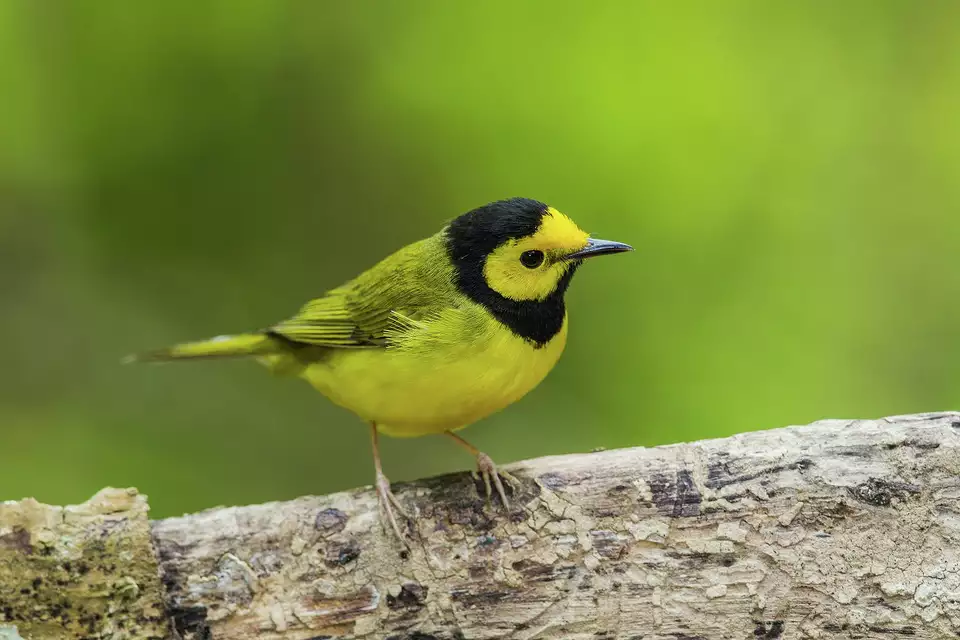Want to see lemon-yellow warblers at your Houston birdfeeder? How to enjoy these beloved birds
By Gary Clark,CorrespondentApril 13, 2024


Hooded Warblers migrate into the area every April.
Kathy Adams Clark/KAC Productions
More than 50 species of warblers migrate to North American breeding grounds every spring, and about 25 of those warblers breed in Texas.
No need to fret if you didn’t get to coastal bird sanctuaries where untold numbers of warblers land after flying across the Gulf of Mexico. You'll get another chance to see the brightly plumed, high-octane birds on breeding grounds in local woodland parks and many other places in the state.
Besides, not all warblers migrate across the Gulf. The handsome golden-cheeked warbler migrates overland from winter homes in Mexico to nest only in the Hill Country. Likewise, the indomitable Colima warbler comes up from Mexico to breed in the high Chisos Mountains of Big Bend National Park and the upper mountains around Fort Davis.
Warblers are classified in the Parulidae family but are commonly called wood warblers. The sprightly 4- to 7-inch-long birds feast primarily on insects in trees and bushes, although spotting them takes patience because of their quick movements.
But patience is worth it when you see a hooded warbler with its sunshiny yellow face and lustrous black hood. The bird breeds in the forested understory of Huntsville State Park, about an hour's drive north of Houston.
To locate the bird, listen for a male's song that sounds like the words "tipee-tipee-tipee-teeeoh." Find a singing male, and you'll see other males nearby singing variations of the typical song.

Closer to home is the prothonotary warbler with a golden cowl offset by immaculate blue-gray wings. You'll find it at Jesse Jones County Park in Humble, where it nests in the park's cypress swamps, accessible by elevated boardwalks. It also nests along other creek-bottom woodlands with cypress swamps, which may be why the golden-colored bird earned the folk name swamp canary.
The bird typically nests in the cavities of cypress tree knees rising from the water like old, worn-down fence posts. But the birds also nest in tree cavities and nest boxes alongside wooded creeks.

Drive to the Hill Country's Edwards Plateau to see the stunningly handsome golden-cheeked warbler that breeds solely in Texas. Look for the bird in oak woodlands with Ashe juniper trees. It strips off pieces of cedar bark to construct a nest in the tree fork of a juniper or oak tree.
Here's where to see neotropical warblers
- Texas habitats with breeding grounds for migratory warblers: coastal marsh lands; bottomland forests in East Texas, including the Big Thicket National Preserve; tropical Tamaulipan brush lands in the Rio Grande Valley; arid mountains in West Texas; red-rock canyons in the Panhandle.
- Woodland parks in Houston and Harris County also have nesting warblers.
- Nearby state parks, such as Sheldon Lake State Park, Brazos Bend State Park, Galveston Island State Park, Huntsville State Park and Stephen F. Austin State Park, support multiple species of nesting warblers.
- Nearby National Wildlife refuges, including Anahuac, Brazoria and San Bernard, are also good places to see nesting warblers.
Houston TX can see lemon-yellow warblers at backyard birdfeeders (houstonchronicle.com) |








